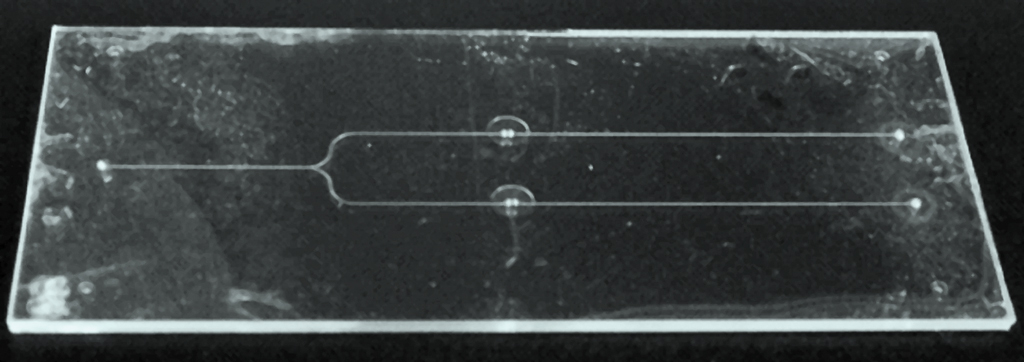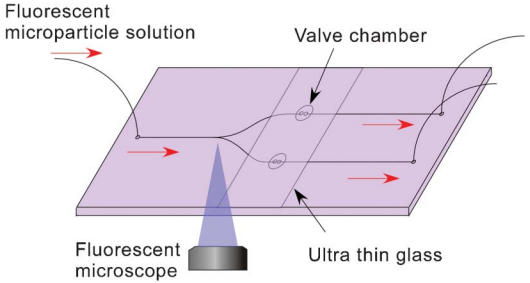An all-glass lab-on-a-chip
July 8, 2013

All-glass lab-on-a-chip (credit: The Royal Society of Chemistry)
Yo Tanaka from the RIKEN Quantitative Biology Center has developed a reliable and durable system for incorporating glass microfluidics into lab-on-a-chip devices.
Lab-on-a-chip devices are microfluidic cells that incorporate pipes, reaction vessels, valves and a host of other implements typically found in laboratories. These components are typically carved into an inexpensive flat plastic plate, made of polydimethylsiloxane (PDMS), to enable efficient processing of microliter-volume samples.
Plastics, however, have several disadvantages, including degradation when exposed to reactive chemicals and a tendency to adsorb sample molecules before they can be analyzed. They can also interfere with analysis techniques that rely on shining a light through the device due to their imperfect transparency, and are difficult to fabricate due to their fragility.
Glass is an attractive alternative because it is chemically resistant, transparent to light and also capable of withstanding higher fluid pressures than PDMS. Producing flexible and durable glass valves, however, has proved difficult.
Design of the all-glass device

Design of an electric actuating valve incorporated into an all-glass-based
microchip (credit: Y. Tanaka/RSC Advances)
To allow glass to be used in these devices, Tanaka developed a Teflon frame to hold an ultrathin sheet of glass so that it could be handled without breaking and incorporated the frame into an all-glass lab-on-a-chip.
Next, Tanaka used hydrogen fluoride to etch channels and chambers into a pair of glass slides, and covered these chambers with ultrathin glass sheets in a way that allowed fluid to be prevented from passing through the chamber by simply pressing down on the glass cover. He then fused the glass sheets together by heating them at 750 °C.
After trying various thicknesses of ultrathin glass sheets, Tanaka found that a 10 micrometer-thick glass film was ideal: strong enough to withstand more than 100 depressions yet able to deform by up to 126 microns — enough to completely close the valve. Tests using water containing small fluorescent polystyrene beads demonstrated that closing the valve using this method blocked fluid flow within 0.12 seconds.
Tanaka now plans to develop his all-glass device for applications such as highly sensitive biochemical analyses and cell studies.
